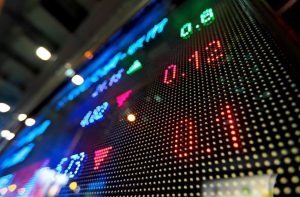The stock of BP p.l.c. (NYSE:BP) decreased by -$0.42 on Monday to finish at $36.68, down -1.13 percent. The last five days have seen an average of 7,188,280 shares of common stock traded. 13 times new highs were reached in the current year, with a gain of $1.75. The average number of shares traded over the last 20 days was 6,984,570, while the average volume over the last 50 days totaled 7,294,386.
BP stock appreciated 3.27% since last month. On 07/17/23, the company’s shares reached a one-month low of $35.30. The stock touched a high of $41.38 on 02/14/23, after rallying from a low of $27.20 in 52 weeks. The price of BP stock has risen by 5.01% or $1.75 this year, reaching a new high 13 times. Still, the stock price is down -11.36% from the 52-week high.
Valuation Metrics
BP p.l.c. (BP) has a trailing price-to-earnings (P/E) ratio of 5.46. Beta for the stock is 0.75. There are also a few other valuation ratios worth considering, including the trailing price-to-sales (P/S) ratio of 0.47, the price-to-book (PB) ratio of 1.52, and the price-to-cash flow ratio of 4.76.
Company paid $0.4362 per share in dividends, an increase of 9.98% from $0.3966 last year. A $0.0396 dividend increase was reported on Tuesday August 1 2023.
Financial Health
For the three months ended June 29, BP p.l.c.’s quick ratio was 0.90, while its current ratio was 1.20, indicating its inability to pay off its debt. The company’s long-term debt to equity ratio for the quarter ending June 29 is 0.79, and the total debt to equity ratio is 0.86. As far as profitability goes, gross margin for the trailing twelve months is 29.40% percent. BP p.l.c.’s EBITDA margin for the year ended June 29 was 23.13%, whereas its operating margin stood at 14.80% for the same period. Based on annual data, it had gross profit of $76.91 billion and revenue of $248.89 billion.
Investors will also look at the performance of the company’s management in order to determine the potential profitability of their investment. BP’s return on assets (ROA) during the last 12 months has been 6.60%. There was a -0.40% return on investment (ROI) in the past year. In the meantime, the return on equity (ROE) for the last 12 months was 27.90%.
Earnings Surprise
According to BP p.l.c.’s quarterly financial report for the quarter that ended June 29, it had $621.0 million in cash and short-term investments. A lower net income was reported in the quarter under review than the previous quarter. Net income for the quarter came in at $248.89 billion, while revenues rose by 34.03% to $0.0. It was predicted that BP p.l.c.’s quarterly earnings would be $0.9, but it ended up being $1.2, beating the consensus by -25.00%. EBITDA was $8.52 billion for the quarter. At the end of BP p.l.c.’s most recent quarter ended June 29, its liabilities totaled 190.46 billion, while its total debt was $60.7 billion.
Technical Picture
Here’s a quick look at BP p.l.c.’s (BP) price momentum from a technical perspective. As of 14 August, the RSI 9-day stood at 48.53%, suggesting the stock is Neutral, with a 18.88% historical volatility rate.
The stochastic %K and %D were 58.81% and 66.42% respectively, while the average true range (ATR) was 0.70. Based on the 14-day stochastic reading of 45.11%, the RSI (14) reading is 51.31%. On the 9-day MACD Oscillator, the stock is at 0.11, and the 14-day reading is at 0.07.
Analyst Ratings
BP p.l.c. (NYSE: BP) was downgraded by DZ Bank to a a Hold rating in its latest research report. The stock was previously rated as a a Buy.









